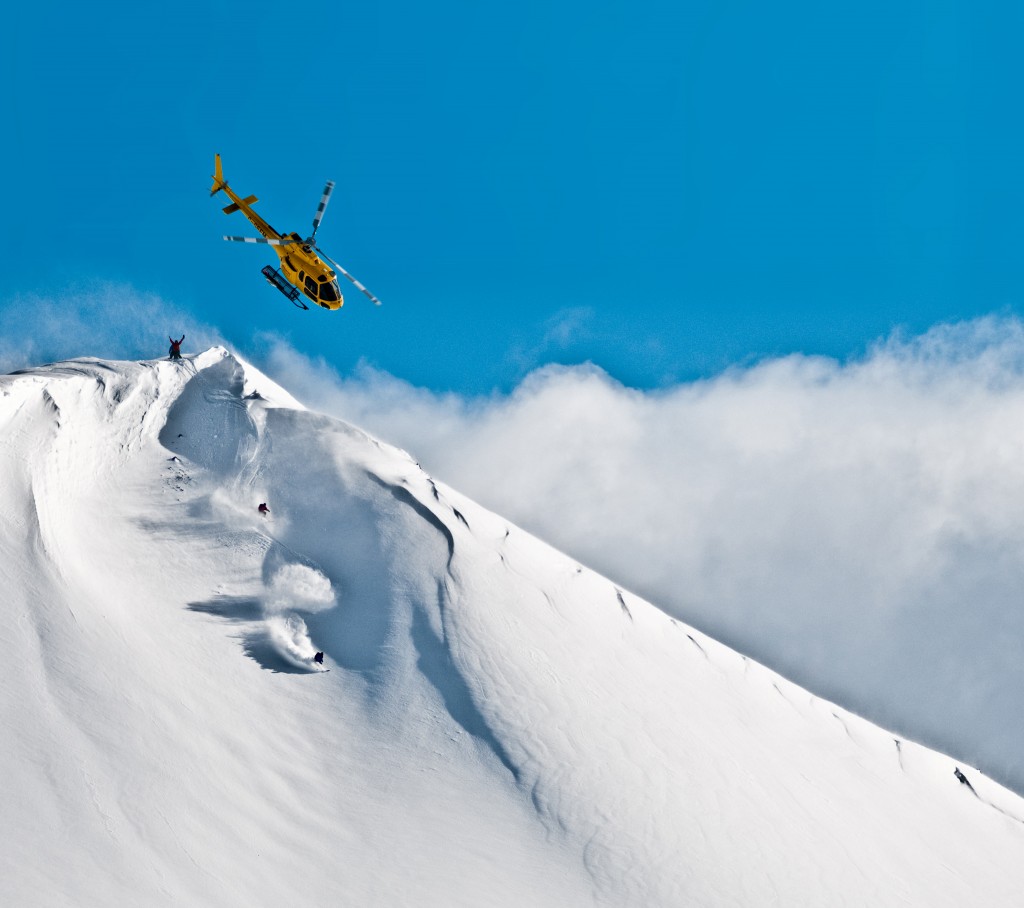High Mountain Heli Skiing: Avalanche Safety Gear
We all love the mountains, and most of us can trace some of the best times of our lives to sliding down the sides of them. On one plank or two it doesn’t matter, what does is getting out there and enjoying oneself. Off-piste skiing does have the potential to put people in dangerous situations, but only when the correct equipment, training, and actions have not been professionally regarded – and we are in control of all of these.
Avalanches are perhaps the greatest worry to first-time heli-skiers. Images of massive class five avalanches can be seen from behind your computer, but in reality avalanches of this sort are rare. At Last Frontier Heli Skiing we provide ABS airbags to every client. We also educate them about the actual risks of avalanches, and the best ways to minimize them. Providing rescue training with the basic three pieces of kit: the Avalanche transceiver, probe, and shovel is mandatory with us, and potentially life saving. Here we’ll describe the basic functions of each piece of equipment.

The Avalanche Transceiver
Avalanche transceivers, also known as beacons, beepers, or PIEPS (the name of a popular brand) are small radio beacons that operate in two modes. The first mode is called transmit. When functioning in this mode the transceiver sends out a radio signal up to a range of around 40 meters, depending on the manufacturer. This is how the transceivers are set when skiing. The next function is the receive mode. In the unlikely event of one of the party being caught in an avalanche, the rest of the group can switch their transceivers to receive, then easily and effectively home in on the unfortunate member, within minutes. A little practice with a transceiver is essential before heading into backcountry, but all are very intuitive and easy to use, especially the Mammut BarryVox models that we have here in BC.
Probe
The probe is the second essential piece of kit needed for off-piste skiing. It is basically a collapsible rod, usually made out of some strong, light material, such as titanium, similar in appearance to a camping tent pole. Probes come in an array of lengths, most commonly around 2 meters. The probe is used to locate the exact position of the person, and their depth under the snow once located with the avalanche transceiver.
Shovel
Lastly, but of great importance, is the shovel. Often lightweight, with a detachable handle, the shovel is vital for efficiently removing snow and debris. A good technique for avalanche rescue is to dig at a diagonal angle, towards the position of the person, from below. This eliminates additional snow falling into the hole you have already made, and uses gravity to assist your digging.
No backcountry heliski tour or snowboard expedition should leave without these vital pieces of safety equipment, or the knowledge of how to use them. Although we give full training on the use of the transceiver, probe, and shovel, nothing can beat prior hands on experience, and an avalanche safety course is the place to get that.
Heli Skiing, Heliskiing, Heli Ski, Heliski, Heli Skiing Tour, Heli Skiing Holiday, Heli Skiing BC, Heli Skiing Resorts, Heli Skiing Lodges


